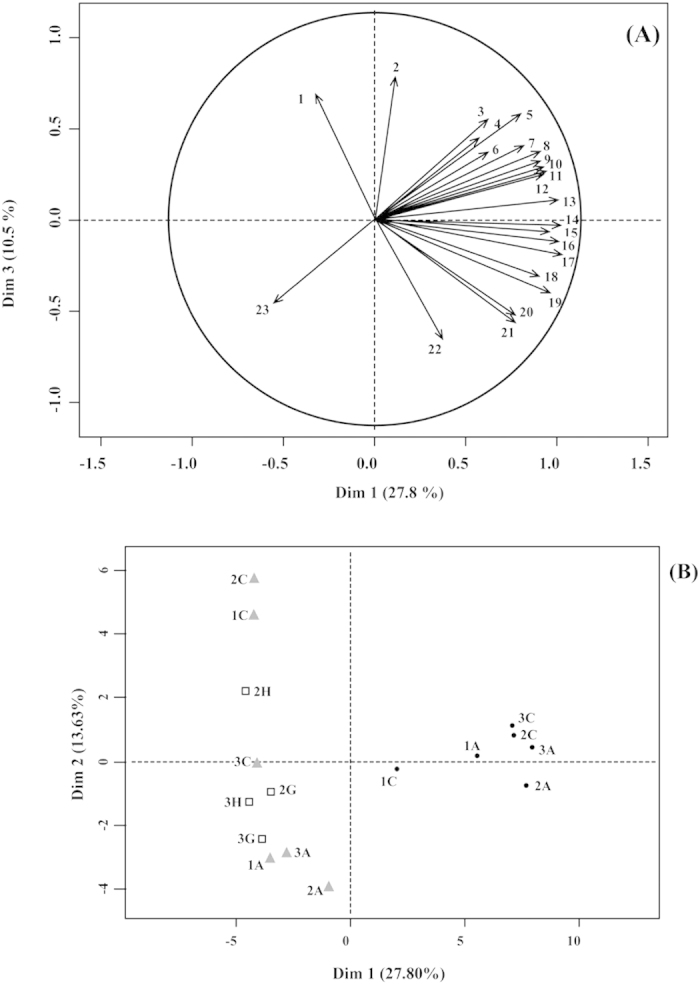Figure 2.

(A) Variations in the abundance of bacterial families in horticultural growing media. According to the correlation circle, the families belonging to the first component of the Multiple Factor Analysis (Dim. 1) are negatively correlated to the abundance of species belonging to Rhizobiaceae (23). Since there are more families in Dim 3., their contribution to the overall variance among samples is smaller. Dimension 3 described the families that were significantly correlated with RW (P < 0.05). 1, Propionibacterineae; 2, Pseudonocardineae; 3, Rhodobacteraceae; 4, Caedibacter; 5, Incertae Rhizobiales; 6, Unclassified Nitrospira; 7, Methylophilaceae; 8, Gaiellaceae; 9, Acetobacteraceae; 10, Actinobacteridae; 11, Xanthobacteraceae; 12, Hahellaceae; 13, Sinobacteraceae; 14, Desulfobacteraceae; 15, Hyphomicrobiaceae; 16, Opitutaceae; 17, Gemmatimonadaceae; 18, Methylocystaceae; 19, Sorangiineae; 20, Hyophomonadaceae; 21, Chromatiaceae; 22, Rhodocyclaceae; 23, Rhizobiaceae. (B) Multiple Factor Analysis map indicated that samples from organic growing medium (GB) displayed similar abundances across time points and differed from those in mineral medium (RW). Bacterial family abundances in samples of RW with hairy roots (RWS) were similar to those in RW. Symbols indicate the growing medium type: black circles for GB, grey triangles for RW and white squares for RWS. The number in the legend specifies the time point and the letter refers to the sample replicate. For instance, the circle labelled as “1A” refers to the replicate “A” of GB, collected at the first time point.
